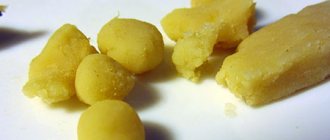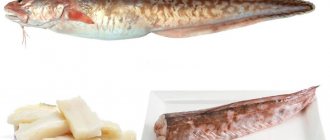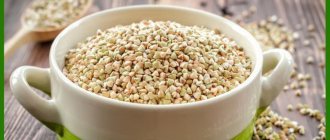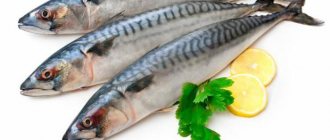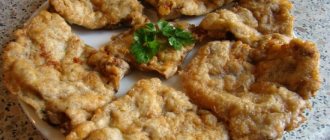Rich in Nutrients
Tahini is rich in healthy fats, vitamins and minerals.
In fact, just 1 tablespoon (15 grams) provides more than 10% of the recommended daily intake (RDI) for some nutrients. One tablespoon (15 grams) of tahini contains the following:
- Calories: 90 kcal
- Protein: 3 grams
- Fat: 8 grams
- Carbohydrates: 3 grams
- Fiber: 1 gram
- Thiamine: 13% of RDI
- Vitamin B6: 11% of RDI
- Phosphorus: 11% of RDI
- Manganese: 11% of RDI
Tahini is an excellent source of phosphorus and manganese, which play a vital role in bone health. It is also high in thiamine (vitamin B1) and vitamin B6, which are important for energy production.
Additionally, about 50% of the fat in tahini comes from monounsaturated fatty acids. They have anti-inflammatory properties and are associated with a reduced risk of developing chronic diseases.
Conclusion:
Tahini contains many vitamins and minerals. It is also rich in anti-inflammatory monounsaturated fats.
Tahini benefits and harm
Sesame paste has become widespread due to the variety of microelements and vitamins in its composition. This product is popular among vegetarians.
- A tablespoon of mass contains more than 60 mg of omega-3 fatty acids and about 4 mg of omega-6. These substances are responsible for the functioning of the heart and brain.
- Calcium. In 100 g of sesame its amount is about 800 mg. For comparison, the same serving of cow's milk contains about 150 mg of calcium.
- Vitamins C, E.
- B vitamins. A serving of pasta contains 15% of the daily value of thiamine, an important trace element for the digestive and nervous system.
- Phosphorus, magnesium, iron, zinc are also present in tahini. These minerals are needed for the smooth functioning of the liver, gastrointestinal tract, and kidneys.
- Cellulose. Helps cope with gastrointestinal problems.
- Miteonin. The substance removes poisons and toxins from the liver.
The beneficial properties of the product are not limited to this list.
- Using sesame paste you can improve digestion. The consistency of the product is homogeneous and puree-like, which allows the body to easily digest heavy foods. A few teaspoons of paste a day will help prevent gastrointestinal disorders or normalize the functioning of the system.
- Acne, pimples and small ulcers on the face can be eliminated by taking just 1 tablespoon of sesame paste per day. This is facilitated by zinc, which is contained in large quantities in tahini. Medical scientists have stated the positive effect of zinc on skin problems. center of Maryland.
- An unbalanced diet leads to deterioration of the scalp. Using a sesame product, you can restore hair health. For those who suffer from dry, brittle and weak hair, there are several recipes. You can make masks based on sesame oil, or take 3 dessert spoons of tahini per day. After a few weeks, the condition of your hair will noticeably improve.
Tahina is a product made from ground sesame seeds, so both products have the same beneficial properties. The same applies to contraindications.
Harm of sesame paste
- It is necessary to avoid tahini if you have varicose veins. Substances contained in sesame products can cause blood clots.
- It is not recommended to take sesame paste and aspirin at the same time.
- You should use sesame paste with caution with foods containing oxalic acid. This list includes tomatoes, sorrel, cucumbers, parsley, spinach and other vegetables and fruits.
- If you are obese, it is not recommended to consume this high-calorie product.
- For gastrointestinal diseases, it is not recommended to eat tahini.
- Allergic reactions to sesame and its derivatives require complete avoidance of tahini.
There is no specific norm for using sesame paste. But even a healthy person cannot eat it in large quantities. Oversaturation of the body with the product can lead to various gastrointestinal disorders.
Rich in antioxidants
Tahini contains antioxidants called lignans, which help prevent free radical damage in your body and may reduce your risk of developing many diseases.
Free radicals are unstable compounds. At high levels in the body, they can damage tissue and contribute to the development of diseases such as type 2 diabetes, heart disease and some types of cancer.
Tahini is especially rich in the lignan sesamin, a compound that has shown promising antioxidant potential in some test tube and animal studies. For example, it may reduce your risk of cancer and protect your liver from free radical damage.
However, more human studies are needed to fully understand these effects.
Conclusion:
Tahini is full of antioxidants, including the lignan sesamin. In animal studies, sesamin has shown numerous health benefits. However, more research in humans is needed.
May reduce the risk of certain diseases
Consuming sesame seeds may reduce the risk of certain diseases, such as type 2 diabetes and heart disease. It may also reduce your risk factors for heart disease, including high cholesterol and triglycerides.
One study of 50 people with knee osteoarthritis found that those who consumed 3 tablespoons (40 grams) of sesame seeds per day had significantly lower cholesterol levels compared to the placebo group.
Another 6-week study of 41 people with type 2 diabetes found that those who replaced part of their breakfast with 2 tablespoons (28 grams) of tahini had significantly lower triglyceride levels compared to the control group.
Additionally, diets rich in monounsaturated fats have been associated with a reduced risk of developing type 2 diabetes.
Conclusion:
Sesame seeds may reduce risk factors for cardiovascular disease and the risk of developing type 2 diabetes.
The benefits and harms of tahini
Tahina paste is a whole treasure trove of minerals and vitamins, which has many beneficial properties:
- Small sesame seeds contain a large amount of unsaturated fatty acids, which strengthen the body and give it a supply of energy;
- The rich content of calcium, magnesium and B vitamins has a beneficial effect on the functioning of the digestive, nervous and cardiovascular systems, and also improves the condition of the skin, hair and nails;
- Phytosterols contained in sesame oil reduce the level of bad cholesterol and prevent heart disease;
- The product is ideal for a vegetarian diet and is easily digestible due to its delicate consistency. The combination of tahini with “heavy” foods helps speed up their digestion.
Harm to the body can only be caused by excessive consumption, because pasta contains a high content of calories and fat.
May have antibacterial properties
Tahini and sesame seeds may have antibacterial properties due to the powerful antioxidants they contain.
In fact, in some countries in Central Europe and the Middle East, sesame oil is used as a home remedy for diabetes-related leg wounds.
In one study on the antibacterial ability of sesame seed extract, researchers found it was effective against 77% of drug-resistant bacteria samples tested.
Additionally, one study on rats found that sesame oil helped heal wounds. Researchers attribute this to the fats and antioxidants in the oil.
However, this is a developing area of research and more research in humans is needed.
Conclusion:
Sesame oil and sesame seed extract have been found to have antibacterial properties in test tube and animal studies. These effects are thought to be due to healthy fats and antioxidants. However, more research is needed.
Use of the product in cooking
The use of sesame paste in cooking is very wide.
In oriental cuisine it is simply irreplaceable and is added for cooking:
- tahini halva and other sweets;
- various sauces and gravy;
- hummus and falafel;
- pies, fish and meat and vegetable and legume dishes;
- noodles among Chinese and Japanese peoples;
- many dishes in Indian cuisine.
27.04.2015
Tahini
,
tahini
,
tahini
,
sesame paste
or
sesame paste
are all the same ingredient found in many Israeli and Middle Eastern dishes such as , and
.
When I traveled around Israel, tahini was added everywhere and to all dishes; it was sold in every small and large store, from grocery stores under the house to hypermarkets. Returning to my country, of course, I didn’t find it on the shelves, so I set out to prepare tahini myself. It turned out that it is not so difficult. Let's try! .
Ingredients
- — 400 g (unroasted, non-bitter)
- - or odorless olive oil - 2-3 tbsp
Cooking method
It cooks very quickly. To make delicious sesame tahini paste, you need to choose the right sesame seeds. Try it before you buy it, it should not be bitter, otherwise the sesame paste will also turn out bitter. Measure out the required amount of sesame seeds. Pour half of it into the blender chopper and start grinding. When the sesame seeds turn into mush, add the second half and grind again. This may take about 5 minutes. If you use a coffee grinder, the result, of course, will be much better and you will achieve the desired consistency faster. My blender can only grind as much as shown in the photo below, but the finer the better. Add sesame oil. And we grind again. Due to the fact that the sesame is heated so much, the consistency should be homogeneous and liquid. Then the tahini will thicken a little in the refrigerator. If the consistency is uneven, add a little more oil and grind again until we achieve the desired result. ready for further use. Many people already use this tahini as a separate sauce, but there is a classic one (with the same name)
Contains anti-inflammatory compounds
Some compounds in tahini have strong anti-inflammatory effects.
While short-term inflammation is a healthy and normal response to injury, chronic inflammation can be detrimental to your health.
Animal studies have shown that sesamin and other antioxidants in sesame seed may reduce inflammation and pain associated with injury, lung disease, and rheumatoid arthritis.
Sesamin has also been studied in animals as a potential treatment for asthma, a disease characterized by inflammation of the airways.
It's important to remember that most of this research was done on animals using concentrated sesame seed antioxidants, not tahini itself.
Tahini contains these powerful antioxidants, but in much smaller quantities. Additionally, more research is needed to fully understand how sesame seeds affect inflammation in humans.
Conclusion:
Tahini contains anti-inflammatory antioxidants. However, more research is needed to understand the effect of sesame seeds on inflammation in humans.
May strengthen your central nervous system
Tahini contains compounds that may improve brain health and reduce the risk of developing neurodegenerative diseases such as dementia.
In test-tube studies, components in sesame seeds have been found to protect the human brain and nerve cells from free radical damage.
The antioxidants in sesame seeds can cross the blood-brain barrier, meaning they can leave your bloodstream and directly affect your brain and central nervous system.
One animal study found that sesame's antioxidants may also help prevent the formation of beta-amyloid plaques in the brain, a feature of Alzheimer's disease.
Additionally, a study on rats found that antioxidants in sesame seeds mitigated the harmful effects of aluminum poisoning on the brain.
However, this is an early study of isolated sesame seed antioxidants rather than whole sesame or tahini. More human studies are needed before conclusions can be drawn.
Conclusion:
Sesame seeds and tahini contain compounds that may promote brain health and protect nerve cells, according to test-tube and animal studies. More human research is needed on the effects of tahini on brain health.
May have anti-cancer properties
Sesame seeds are also being studied for their potential anti-cancer effects.
Some test-tube studies have shown that antioxidants in sesame seeds promote the death of colon, lung, liver, and breast cancer cells.
Sesamin and sesamol, the two main antioxidants in sesame seeds, have been extensively studied for their anti-cancer potential.
They both can promote cancer cell death and slow tumor growth. They are also thought to protect your body from free radical damage, which can reduce your risk of cancer.
Although existing test tube and animal studies are promising, more research in humans is needed.
Conclusion:
Tahini contains compounds that may have anti-cancer properties. However, more research in humans is needed.
Helps protect liver and kidney function
Tahini contains compounds that may help protect your liver and kidneys from damage. These organs are responsible for removing toxins and waste from your body.
One study of 46 people with type 2 diabetes found that those who consumed sesame oil for 90 days had improved kidney and liver function compared to the control group.
Additionally, a test-tube study found that sesame seed extract protected rat liver cells from the toxic metal vanadium.
Moreover, a rodent study found that consuming sesame seeds helps improve liver function. This increased fat burning and decreased fat production in the liver, thereby potentially reducing the risk of fatty liver disease.
Although tahini contains some of these beneficial compounds, it contains smaller amounts than those found in the sesame seed extracts and oils used in these studies.
Conclusion:
Sesame seeds contain compounds that can protect your liver and kidneys from damage. However, more research is needed to fully understand these effects.
Recipes with sesame paste
There are many recipes for preparing meat and fish dishes with sesame paste. Fish goes well with sesame. The tandem of these products gives the dish an exquisite taste and increases its beneficial properties. Microelements and vitamins are better absorbed.
Fish dressed with sesame paste
You can prepare a dish of Far Eastern cuisine from any sea fish - hake, salmon. The delicacy is suitable as a main independent dish for lunch or dinner. Fish goes well with a side dish of mashed potatoes. It is recommended to cook samak bill tahini in the oven.
One serving contains 220 kcal. For 6 servings you will need:
- 500 g sea fish steaks;
- 100 g tahini;
- 1 medium carrot;
- onion head;
- 1 sweet pepper;
- 2 cloves of garlic;
- squeezed juice from one lemon;
- parsley;
- salt, carmadon and freshly ground black pepper - to taste;
- cloves, cumin, coriander, paprika, nutmeg - according to preference;
- odorless vegetable oil for frying vegetables.
Cooking algorithm:
- Prepare the fish fillet - wash and dry with a towel.
- Mix nutmeg, paprika, coriander, cloves and cumin.
- Heat the oven to 200 degrees, rub each piece of fish with a mixture of spices and place in a pre-greased dish. Place the contents in the oven for 15-20 minutes.
- Peel, wash and cut the vegetables into small slices and fry in a frying pan until golden brown.
- Finely chop the greens and add to the vegetables.
- For the sauce: dilute tahini with a little water. The mass should be of medium thickness. Add squeezed garlic, carmadon, lemon juice, and a pinch of salt.
- Remove the fish from the oven. Place a layer of vegetables mixed with parsley on top. Pour sesame sauce over everything.
- Place in the oven for 15 minutes.
- The finished dish can be sprinkled with finely chopped herbs, nuts, lettuce leaves or slices of vegetables.
Chocolate tahini cake
The cake rightfully occupies a leading position in baking recipes. A tasty delicacy can also be made healthy if you prepare it according to the recipe of pastry chef Stellos Parllaros. The Greek dessert consists of 3 layers of unsalted butter, meringue and chocolate.
For the first version of the cream you need tahini and sour cream, classic yogurt or cream, for the second - condensed milk, sugar and sesame paste. The cake turns out to be high in calories - 300 kcal per serving. For 8 servings of dessert you need:
- 100 g unsalted butter;
- 5 chicken eggs;
- 200 g granulated sugar;
- 2 cups of flour;
- 200 g of classic yogurt without additives, sour cream or cream;
- 1.5 cups tahini;
- 200 g - dark dark chocolate;
- a pinch of table salt.
Manufacturing sequence:
- Separate the whites from the yolks, beat them until stable (meringue) with half the sugar;
- Melt 100 g of chocolate in a water bath, add butter to the mixture. Stirring constantly, bring the mass to a homogeneous consistency, remove from the stove and carefully add 5 yolks and salt;
- Add a little flour and beaten egg whites. The consistency of the dough should be like pancakes.
- Divide the mass into 3 equal parts. Bake each cake in a round pan.
- Heat the remaining 100 g of chocolate and paste in a water bath;
- Beat yogurt or sour cream with sugar. Mix the ingredients.
- Coat the finished cakes with cream. Place the cake in the refrigerator for 2 hours.
- You can decorate the dessert with fruits, chocolate or nuts.
Oriental pasta with a unique taste will help diversify the menu. This product will make any dish unique - from a simple vegetable salad to complex culinary masterpieces.
Fragrant, spicy, rich taste and delicate texture, these qualities are possessed by sesame paste. Connoisseurs of oriental cuisine and gourmets give it special preference. For example, you can feel the taste of the orient by tasting tofu cheese and dipping it in sesame paste. But besides the unique taste, the product is very rich in nutrients and minerals. The original classic composition of the paste is 100% sesame seeds and a little water.
Tahini is easy to include in your diet
Tahini is easy to include in your daily diet. You can buy it online and in most grocery stores.
This sesame paste is well known as an ingredient in hummus, but it is also great as a separate spread on bread or as a dip for pita bread, meats and vegetables. You can also add it to sauces, salad dressings and baked goods.
How to make tahini
Ingredients:
Making tahini is easy. You only need the following ingredients:
- 2 cups (284 grams) shelled sesame seeds
- 1–2 tablespoons mildly flavored vegetable oil, such as avocado oil or olive oil
Management:
- Toast sesame seeds over medium heat in a large, dry skillet until golden and fragrant. Remove from heat and let cool.
- Grind the sesame seeds in a food processor. Slowly add oil until the paste reaches the desired consistency.
There is varying information regarding the shelf life of tahini, but most websites claim that it can be safely stored in the refrigerator for up to one month. The natural oils in it may separate during storage, but this can be easily remedied by stirring the tahini before use.
Making tahini from raw sesame seeds is also a good option. To prepare it, skip the first step of the recipe. However, some studies show that toasting sesame seeds increases their nutritional value.
Conclusion:
Tahini is a key ingredient in hummus, but it can also be used as a dip or spread on bread. It's very easy to make using just sesame seeds and vegetable oil.
Tahini - what is it?
In oriental cuisine, paste made from sesame seeds is very popular. It is prepared from simple ingredients and is suitable for a vegetarian menu. It also contains vegetable oil, and sometimes lemon juice or water is added. Tahini is a valuable product, a source of vitamin B1, minerals and fatty acids. That is why it is believed that eating sesame paste has a beneficial effect on hair growth, fights acne on the skin, and also has a positive effect on digestion. Now that we have answered the question “what is tahini,” let’s move on to the recipe for its preparation and tell you about dishes prepared on its basis.
Summarize
- Eating tahini is a delicious way to add powerful antioxidants and healthy fats, as well as several vitamins and minerals, to your diet.
- This sesame paste has antioxidant and anti-inflammatory properties, and its health benefits may include reducing risk factors for cardiovascular disease and protecting brain health.
- It's also very easy to make at home using only two ingredients.
- Overall, tahini is a simple, healthy, and delicious addition to your diet.
How to make tahini paste at home
Making sesame paste at home is easy, and the appearance of a new product on the table will allow well-known dishes to “open up” with fresh flavors.
You only need two ingredients:
- 200 g sesame seeds;
- 70 g sunflower or any vegetable oil.
Preparation step by step:
- Freshly harvested sesame seeds are lightly fried in a dry frying pan until creamy (as desired).
- Cooling off.
- In a blender, beat the seeds until crumbly, mix with oil and puree until smooth.
- If desired, you can add garlic, fresh herbs, and pepper to the tahini.
Ready-made pasta is used both as an independent dish and to complement the taste. Its thickness is regulated by the volume of oil.
